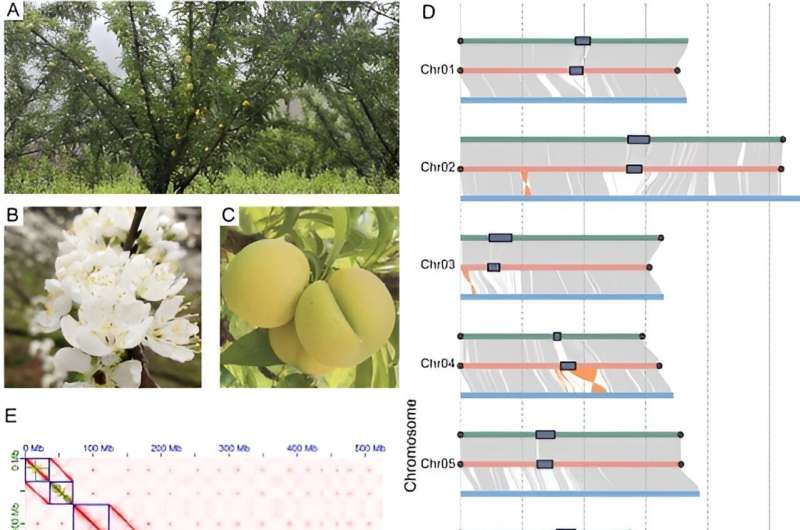This article has been reviewed according to Science X's editorial process and policies. Editors have highlighted the following attributes while ensuring the content's credibility:
fact-checked
peer-reviewed publication
proofread
Peeling back the genetic layers of stone fruit domestication

The Prunus genus, encompassing apricots, peaches, plums, and mei, is vital due to its economic and nutritional value. However, the genetic foundations of these species' shared and unique traits remain largely unexplored. This knowledge gap hinders advancements in breeding programs aimed at improving fruit quality and stress tolerance.
Addressing these issues is crucial for sustainable cultivation and enhancing crop resilience to environmental challenges. Based on these challenges, it is essential to conduct in-depth research to uncover the genetic diversity and evolutionary history of Prunus species.
A team of researchers from several institutions in China, including Guizhou University and the Chinese Academy of Agricultural Sciences, published a study on April 16, 2024, in the journal Horticulture Research that focuses on the comparative population genomics of the apricot-peach-plum-mei (APPM) complex, utilizing advanced genomic technologies to reveal insights into the evolutionary history and domestication of these species.
The research team successfully generated a high-quality, haplotype-resolved telomere-to-telomere (T2T) reference genome for a plum cultivar. This comprehensive genome assembly facilitated comparative genomic analyses across the APPM complex.
One key discovery was a significant chromosomal translocation in the apricot genome, affecting important traits like acidity and sugar content. Additionally, population genetic analyses revealed substantial gene flow between plum and apricot, with introgression regions linked to post-embryonic development and pollen germination.
The study identified both shared and unique genes among the four species, providing insights into the evolutionary pressures shaping these crops.
By highlighting convergent and divergent selection signals, the research offers a deeper understanding of the genetic mechanisms underlying key agronomic traits, which is essential for advancing Prunus breeding programs and improving fruit quality and resilience.
Dr. Yongfeng Zhou, one of the senior authors, stated, "Our findings provide valuable insights into the genetic diversity and evolutionary mechanisms of the Prunus species. This knowledge will significantly contribute to the genetic improvement and sustainable cultivation of these economically important fruit crops."
The insights gained from this study have important implications for the breeding and genetic improvement of Prunus species. By understanding the genomic regions and genes involved in key traits, breeders can develop new varieties with improved qualities such as better taste, increased stress tolerance, and higher yields.
The research also lays the groundwork for future studies on the genetic basis of adaptation and domestication in fruit crops.
More information: Xuanwen Yang et al, Comparative population genomics reveals convergent and divergent selection in the apricot–peach–plum–mei complex, Horticulture Research (2024). DOI: 10.1093/hr/uhae109
Journal information: Horticulture Research
Provided by Guizhou University


















